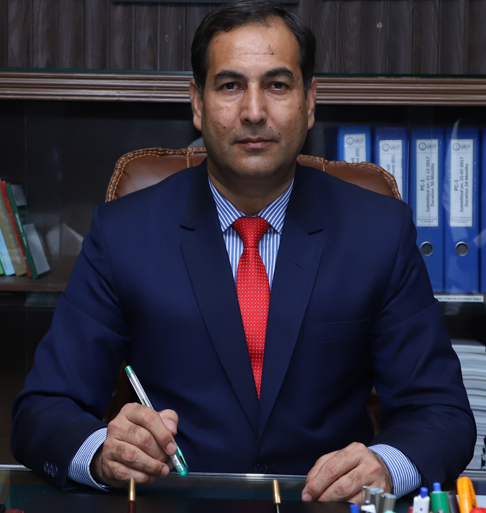In response to allegations of plagiarism, the vice chancellor of a university in Pakistan has brought a 500 million rupee (~$2,800,000USD) defamation suit against his accuser.
As we reported last July, Farukh Iqbal, of the Department of Chemical and Environmental Engineering at RMIT University, in Melbourne, Australia, had discovered that a paper in the journal Fuel had lifted text from his master’s thesis.
Among the authors was Muhammad Suleman Tahir, the vice chancellor at Khwaja Fareed University of Engineering and Information Technology, in Rahim Yar Khan.
The journal retracted the work, acknowledging the theft.
But Tahir didn’t do what we typically see plagiarists do when caught: quietly accept punishment and hope the world moves on.
Instead, Tahir accused Iqbal of having plagiarized from his work and that of one of his students in a 2020 paper which included part of Iqbal’s thesis. Iqbal’s current institution dismissed that charge in November 2021 after finding “no evidence” of plagiarism by its researcher.
Meanwhile, Tahir and his co-authors – high-profile academics in the Middle East – appear to have filed their suit against Iqbal in July. The bulk of the complaint argues – using difficult-to-follow logic – that Iqbal, not Tahir, was the plagiarist and that his “ugly campaign” has “irreparably injured … [the] credit, character, reputation and health” of the plaintiffs, who have suffered “indescribable isolation, persecution, mental torture, humilation and material loss” in the process. Such suffering, they add, will endure “for ever.” (Evidently, the definition of “irreparable” is $2.8 million.)
The Pakistani government has at least tacitly backed Tahir.
I have also launched a complaint in the Pakistani prime minister portal and that office sent all the times my complaint to a concerned university whose VC is guilty and all the time they replied that we did not find any plagiarism even [after] the paper is retracted by ELSEVIER.
According to documents Iqbal sent us, the most recent rejection came on Nov. 29, 2021.
Tahir did not immediately respond to a request for comment.
Like Retraction Watch? You can make a one-time tax-deductible contribution by PayPal or by Square, or a monthly tax-deductible donation by Paypal to support our work, follow us on Twitter, like us on Facebook, add us to your RSS reader, or subscribe to our daily digest. If you find a retraction that’s not in our database, you can let us know here. For comments or feedback, email us at [email protected].

The link ‘complaint’ is the response letter from the university. I assume it should be a different document.
Fixed — thanks.
I hope Tahir didn’t plagiarize his counter-plagiarizing claim.
Haha funny
Take a look at Fig. 1, 2 and 5 in Tahir’s now retracted Fuel paper: there are several points where the spectra and TGA plots show impossible curves, moving “backwards”.
This is most obvious in Fig.1 where there is a “sideways” FT-IR peak around 734.5 cm-1, multiple absorbance values therefore corresponding to a given wavenumber – a mathematical impossibility.
Not only did this paper plagiarize data, the figures that were not plagiarized appear to have instead been blatantly (and crudely) manufactured. (This looks hand-drawn!)
I find it ironic that the word “fabrication” is in its title.
There’s no law on plagiarism.
All laws are in fact plagiarism.
It’s still plagiarism even if source material is rewritten and credited as there’s no original thinking and no originality of thought.
Compilation of known facts is plagiarism.
Editing down material helps avoids similarity of content if its less than 30 per cent. No marks are deducted.
Connecting the dots isn’t plagiarism. There’s original thinking and original thinking and originality of thought.
Those sure are a lot of words for “I don’t know what plagiarism is”.
If you copy paste something that you wrote yesterday, it’s plagiarism.
Joe, baby, maybe stop talking.
That does makes sense. Although I’ve never heard of committing plagiarism against yourself. That’s a interesting concept.
Plagiarism is primarily referring to taking credit for other’s work. However it is also plagiarism if you were to use data from someone else’s study to come to a result, without acknowledging it.
Let’s say I want to publish a study on frequency of thunder relative to lightning. How many times thunder booms relative to lightning strikes. (This is just a simple example) If I were to use data acquired outside of my own study then I have to cite and acknowledge credit, else it is plagiarism.
Ah the male patriarchal ego!